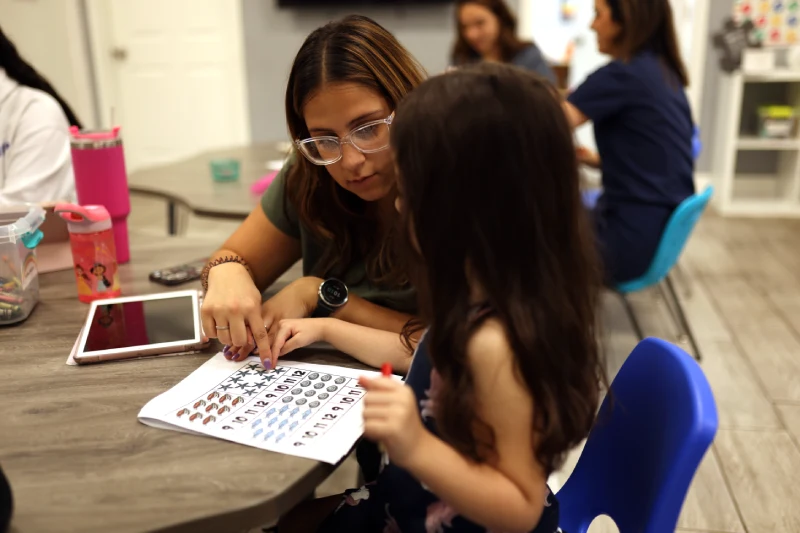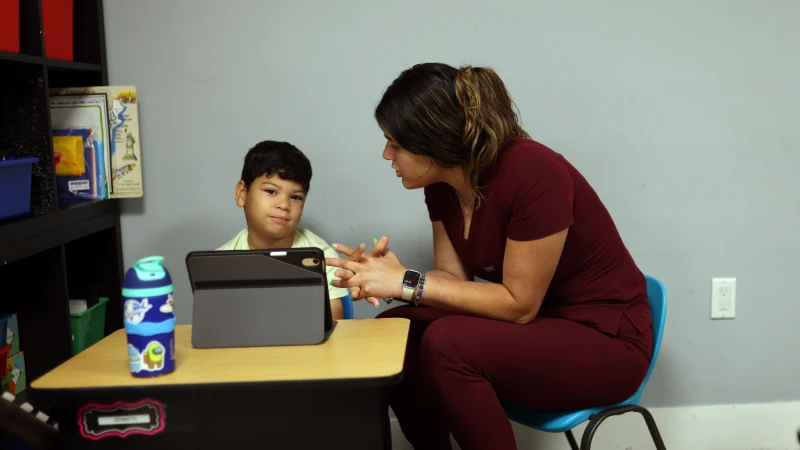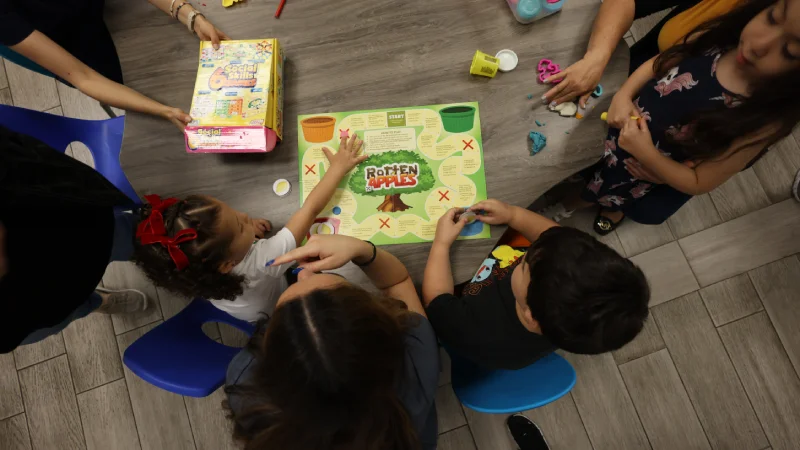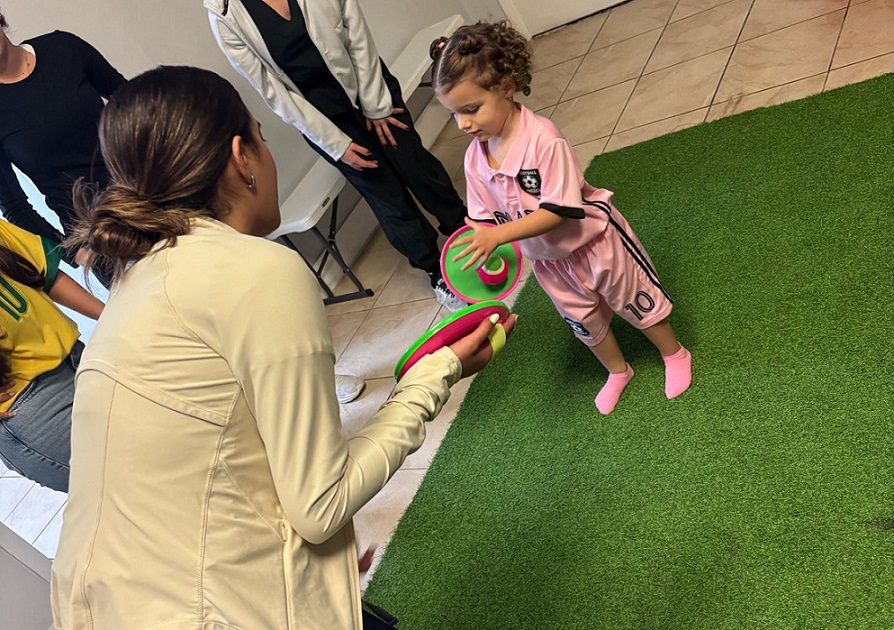ABA Therapy, or Applied Behavior Analysis, has become an essential pillar in the treatment of childhood autism. This methodology, grounded in scientific principles, aims to improve children’s social and communication skills by personalizing strategies to fit each individual’s specific needs.
Moreover, its importance also lies in its structured and measurable approach, which allows specialists and families to observe concrete progress over time. In this way, ABA therapy represents a tangible hope and the possibility of building a future full of opportunities for individuals facing unique challenges.
In this article, we highlight why it is so crucial to learn more about this therapy, based on one premise: childhood autism may pose complex questions, but ABA offers clear and practical answers.
Why Is Applied Behavior Analysis Important?

Applied Behavior Analysis (ABA) is a methodology that has transformed many lives, especially those of children with autism. This approach, based on the study of behavior, allows for the identification of patterns and the development of strategies to foster essential skills and reduce challenging behaviors.
Its importance lies not only in its results but also in the fact that ABA Therapy is based on operant conditioning, aiming to change socially significant behaviors. Thus, ABA stands out as one of the most effective therapies to support child development. Below, we summarize the most important details of this therapy:
- Evidence-Based: ABA is grounded in scientifically proven principles of human behavior.
- Personalized Results: It allows for adapting strategies to each individual’s unique needs.
- Fosters Key Skills: Helps develop academic, communication, and social skills.
- Reduction of Challenging Behaviors: Focuses on identifying and managing behaviors that interfere with development.
- Wide Applicability: It can be implemented in different settings, such as schools, homes, and communities.
- Improves Quality of Life: Benefits not only the individual but also their family environment, promoting more positive interactions.
How Does ABA Therapy Work?

What sets ABA apart from other therapies is mainly its structured, personalized, and results-driven approach. It not only works with the child but also involves parents and caregivers. ABA therapy differs from behavior modification in that it brings about changes by first evaluating the relationship between the behavior and the environment.
The ultimate goal of these therapy sessions is to foster the child’s independence through learning and the development of new skills, resulting in an increase in positive behaviors and a reduction of problem behaviors. So, how does ABA therapy work? Here’s a breakdown:
- Initial Assessment: A detailed evaluation is conducted to identify the child’s needs, strengths, and areas for improvement.
- Design of Personalized Programs: Specific plans are developed to teach social and communication skills.
- Positive Reinforcement: Rewards are used to encourage desired behaviors and motivate the child to repeat them.
- Reduction of Undesirable Behaviors: By identifying the causes of such behaviors, strategies are implemented to gradually decrease them.
- Constant Monitoring: Therapists collect data regularly to measure progress and adjust the program.
- Family Involvement: Parents and caregivers are an essential part of the process.
- Repetitive Practice: Sessions are structured and repetitive to ensure consistent learning of skills.
What Are the Benefits of ABA Therapy?

Thanks to its structured and measurable approach, ABA therapy has become an indispensable tool for promoting individual development and facilitating social integration. This therapeutic approach fosters essential skills while improving the quality of life for both children and their families.
There is a common misconception that ABA therapy is used only in autism treatment plans. However, it can also benefit individuals with ADHD, obsessive-compulsive disorder, and other developmental disabilities. Here are the most tangible benefits of ABA Therapy:
- Improvement of Social Skills: Helps children develop positive interactions by encouraging communication.
- Strengthening of Communication: Teaches techniques to improve both verbal and nonverbal communication in people with autism.
- Development of Academic Skills: Facilitates the learning of basic concepts in reading, writing, and mathematics.
- Increased Autonomy: Helps children acquire skills to navigate daily life independently.
- Comprehensive Family Support: Parents and caregivers learn useful strategies to apply at home.
- Measurable Results: Progress is monitored regularly, providing clear data on achievements.
How Long Does It Take for ABA Therapy to Work?

One of the most frequently asked questions is how long it takes for ABA Therapy to “work.” You should know that this time frame varies depending on the child’s individual characteristics and the intensity of the program. However, it’s important to understand that children, adolescents, and even adults with ASD can greatly benefit from ABA.
ABA therapy produces undeniable results by targeting behavior modification while improving attention, play, communication, motor, and social skills. Therefore, understanding the factors that influence its effectiveness is key to managing expectations and maximizing benefits:
- Individual Variation: Each child responds differently to therapy depending on their age, developmental level, and specific needs.
- Program Intensity: More intensive behavior therapy programs tend to produce quicker results.
- Family Commitment: Active participation by parents outside of sessions significantly accelerates the child’s progress.
- Specific Goals: The time needed to achieve results depends on the initially set goals.
- External Factors: Session consistency, ABA therapist quality, and the environment where therapy is applied are important factors.
In summary, ABA therapy does not have a fixed timeline to “work.” However, its personalized approach ensures sustainable progress over time.
How to Get Started with ABA Therapy?

Starting ABA therapy can seem daunting at first, but with the right guidance, it’s a fairly clear and accessible process. The key is to understand the necessary steps to get started correctly and find the right resources to ensure success.
Although early intervention leads to more significant results, there is no specific age after which ABA therapy stops being effective. Nevertheless, early intervention undeniably makes a major difference in long-term outcomes. So, how do you begin ABA therapy? Here’s a detailed guide:
- Professional Assessment: An ABA specialist should conduct an initial evaluation to determine the child’s specific needs.
- Find a Qualified Therapist: Look for certified therapists (BCBA or BCaBA) with experience in delivering ABA services.
- Choose a Personalized Program: Make sure the plan is tailored to the child’s individual needs.
- Family Commitment: Parents and caregivers must be willing to actively participate in the process.
- Set Realistic Goals: Define short- and long-term objectives, understanding that results require time and consistency.
- Organize Sessions: Determine the frequency and duration of therapy sessions to maximize benefits.
- Continuous Monitoring: Regularly review and adjust the program based on the child’s progress, using collected session data.
- Seek Additional Support: Join support groups and specialized communities to share experiences and receive guidance.
ABA Therapy at Koala ABA & Learning Centers.
At Koala ABA & Learning Centers, our certified therapists delve deep into the intricacies of ABA Therapy, from fundamental techniques to its seamless integration into educational settings. We address common challenges with innovative strategies, fostering a supportive environment that nurtures growth and independence.
Whether you are a parent, caregiver, or educator, at Koala ABA & Learning Centers, we offer valuable resources and insights on how to leverage ABA Therapy for positive behavioral outcomes in children with autism. We focus on three key methods to ensure therapy success:
- Discrete Trial Training (DTT)
- Natural Environment Teaching (NET)
- Task Analysis and Chaining
Contact us today! Discover how we can unlock the full potential of ABA Therapy and embark on a journey of skill development, empowerment, and lifelong learning for our children.






